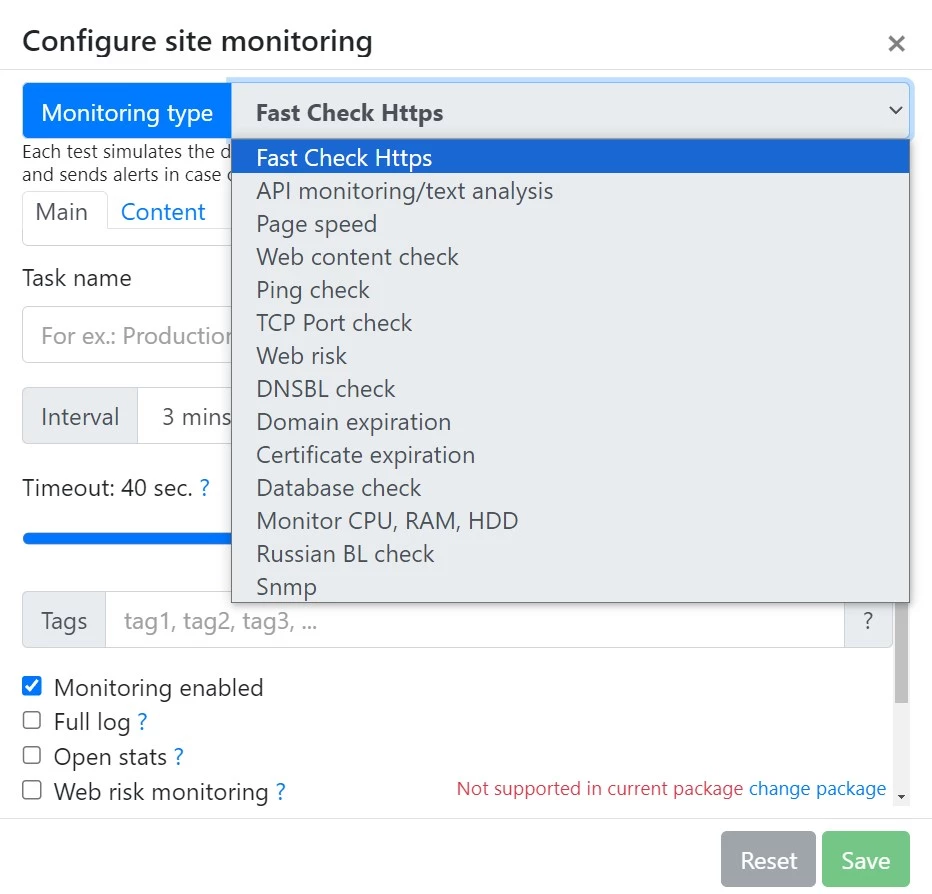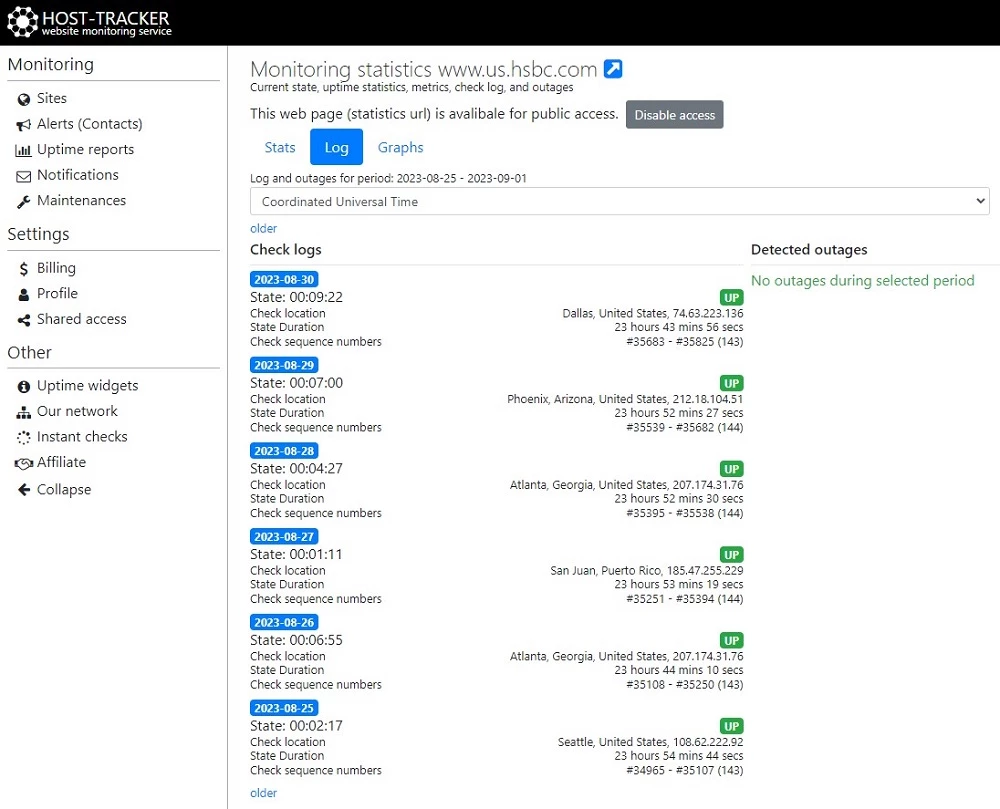How Do I Monitor Website Availability?
In a modern world almost everyone spends a lot of time browsing the Internet. And literally everyone who browses the Internet wants to have complete access to the websites they like, 24 hours a day, 7 days a week. Therefore, if you own a website, then you should be concerned with its availability to its users. And to keep the website’s availability in check, you should at least ask yourself a question like ‘how do i monitor website availability’ or ‘how to keep my website accessible 24/7’ and the like.
Those questions, although looking hard to answer on the surface, are relatively easy on the inside. Because, actually, all you need to do is to understand the need in monitoring itself and its principles. And, of course, learn what tools you should use to get the most precise information about the state of the website you’re monitoring.
Why Monitor Website Availability?
As it was mentioned, the website’s availability (or uptime) management is a must for the webmaster of the said website. Or its owner, if you’re just launching the website for your business. There are plenty of reasons for this, First and foremost – users. If the website becomes inaccessible for users, no matter the reason, it will quickly become an annoyance to them. Because, strictly speaking, no one would like it if their frequently-visited favorite website is out of reach.
Therefore, if the website is unavailable for users, they would probably get over it for once. Maybe even for a few times. But in the end, if the situation with the website’s unavailability continues for a long time or will be repeating, even the most patient users will start to leave. And if users stop visiting the website, it will badly affect its reputation and rankings. For businesses, this situation is akin to giving away their audience to competitors. In truth, it is a very bad turn of events for any business, no matter its size and niche.
Therefore, as it was stated, from a business perspective monitoring the website is a must. It’s a necessary measure required to keep its audience stable and growing. Website monitoring using powerful tools like worldwide website availability test Host-tracker helps with maintaining its availability for users and, in addition, to search engines. The latter is a must, too, because the SERP (Search Engine Result Page) position of the website is determined by its availability in the first place. It basically says a lot about its reliability and greatly affects its development and promotion.
Key Metrics for Monitoring

Website’s availability is not the only metric you should worry about as the said website’s owner or webmaster. Because, obviously, SERP ratings are taking a lot of various factors into account, not the website’s uptime only. Therefore, it is vital to know what metrics to keep in check.
First of all, the metrics. There are actually five main ones – uptime (or accessibility percentage), ping (real-time accessibility), loading speed, database performance and server stability. Uptime is an overall availability percentage that is vital for the website’s SERP ratings. Ping is a metric to check the current state and availability of the website. Loading speed is its overall performance that is the most vital for the user satisfaction (if there are no accessibility issues, of course). Database performance is the website’s actual functionality performance metric. And server stability (hardware-wise) is the thing that affects all metrics if there are issues with it.
Of course, those metrics are only basic for the website’s monitoring routine. Therefore, there will be more. For example, traceroute will help with determining the network distance from different locations around the world if your website is working on an international level. Or DNSBL checking will help you in understanding the reason why your website was blocked in certain regions or worldwide.
Methods for Monitoring Website Availability
Website monitoring in itself is a relatively easy task if you put some effort into it and pick a proper approach. In the past, webmasters used either a dedicated monitoring server or automated software solutions. Both those methods have their own cons – the former is an expensive one and actually affordable only for large companies, and the latter is dependent on the user’s hardware being always online. Of course, it is possible to do everything completely manually, but it will be time-consuming and won’t do any good in terms of providing constant real-time diagnostics.
As for the most suitable tools for website monitoring, the best choice would be to find a well-made online toolkit. It is a relatively new method that became popular in the beginning of the 21st century. And as of now it has become thoroughly widespread among webmasters who want to relate their tasks to automated systems with most convenience and functionality. So if you want to keep the website always under surveillance, then you should use an automated solution like the HostTracker platform, the most useful among its competitors.
Using platforms like HostTracker allows performing a lot of monitoring tasks with ease even to novice webmasters and inexperienced website owners. And considering that such toolkits include a variety of checks and tests that are working completely autonomously, they are highly useful to seasoned professional webmasters, too.
Moreover, HostTracker service, for instance, has an in-built notification system that will send a message in case of failed checks. For example, you can ping site from any location on host tracker on a scheduled basis and as soon as it notices that something’s wrong, it will notify the person that is responsible for fixing issues.

How to Choose a Monitoring Solution
Picking a proper monitoring solution to keep your website in check is not only about finding the most reliable toolkit among those present all over the Internet. It is also about the variety of available checks and tests as well as about additional functionality provided by the chosen platform. Taking into account that not all reliable monitoring services have wide toolsets and vice versa, it is important to pick your choice carefully.
Basically, before subscribing to the automated website monitoring online service, it is important to do several things – check pricings, check reviews, review available main and additional options, and assess available functionality in case of future needs. Practically, it is almost the same as with picking a hosting service for your website. So, in short, you need to search for reliable and user-appreciated services with not too high subscription fees, a big number of available tools and a potential for future use. And the HostTracker monitoring platform, being one of the best among others, fits the bill just perfectly.
For instance, with the help of this service you can check website hosting status by hosttracker tools, check the website’s performance, loading speed, database stability and even server hardware parameters. Of course, everything will be executed automatically and according to schedule you will set up yourself. Not to mention that the HostTracker system will instantly notify you about failed checks and other issues that happened during monitoring. This way you will be able to do other tasks without worrying about monitoring routines.
Monitoring Reports

As soon as you decide on monitoring tools, get yourself the best ones and start monitoring your website, it’s time to understand a little about reading through monitoring reports almost all services are providing after checks. As with literally everything that is related to monitoring of the website (although its maintenance is way harder than this alone), it only seems to be hard to read.
In reality, monitoring reports, at least at the HostTracker platform, are designed to be easy-to-understand even for novices. Otherwise the webmaster will see no end to him or her explaining the problem to the website’s owner who, for example, has literally no technical knowledge. Because raw diagnostic data is completely not suitable for someone who needs just the fact about something happening with the website.
Using the HostTracker service as an example, usually monitoring reports (daily, weekly, monthly and so on) include the name of the check, a number of checks succeeded and failed, and a check issue percentage. Of course, this data is literally not enough for the professional webmaster to determine the source of the problem. But that’s not what the purpose of such reports is. As it was stated, it’s mainly a statistical thing to explain everything with ease.
For a more thorough approach, the HostTracker platform in particular, provides logging capabilities to its users. It is, as its name suggests, a complete log for each separate check you could read through if you’ve found a long-term issue or simply want to check on the website’s status at the time of the monitoring procedures occurring before the report was submitted to the user by the system.
Final Words
Concluding everything that was said above, everything that is related to the website monitoring is a little bit complicated at a first glance, but relatively simple on the inside. As the website owner you should always keep your website in check or you may suddenly find yourself in the situation when you needed the website checked and monitored not sooner than yesterday. Because sometimes without monitoring the thing could happen that the problem already occurred, caused harm and left unfixed while you were struggling with not so timely conducted diagnostics procedure.
Therefore, it is a must to have a very reliable and highly autonomous website monitoring system always at hand and working at its full capacity, just like the HostTracker platform. Because if the website that you’re monitoring was left unchecked and unstable, it will obviously and surely lead to the audience loss, reputational loss and a lot more than that. Not to mention the fact that such a situation will greatly affect the website’s SERP ratings and overall evaluations from search and advertising systems.

